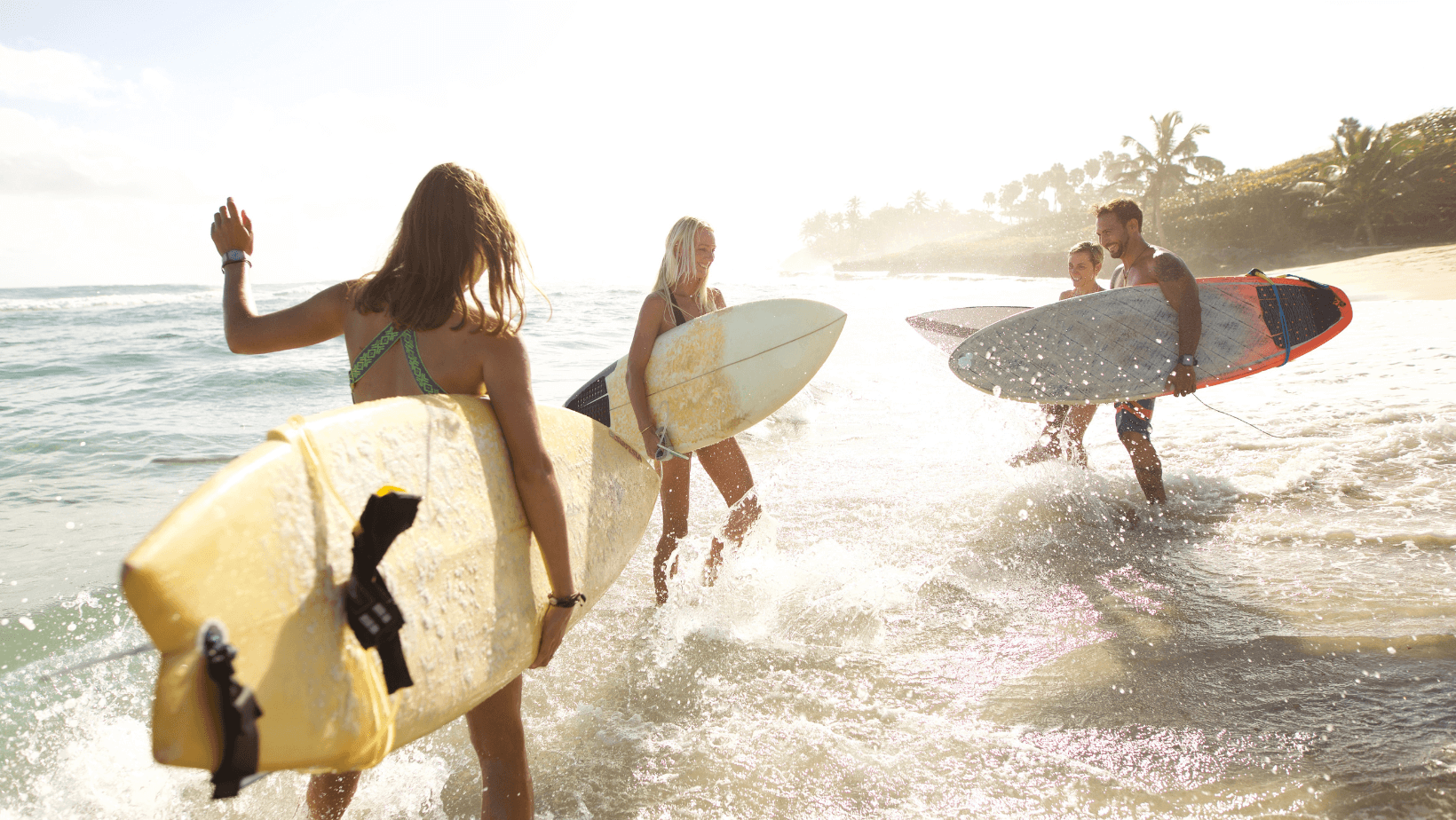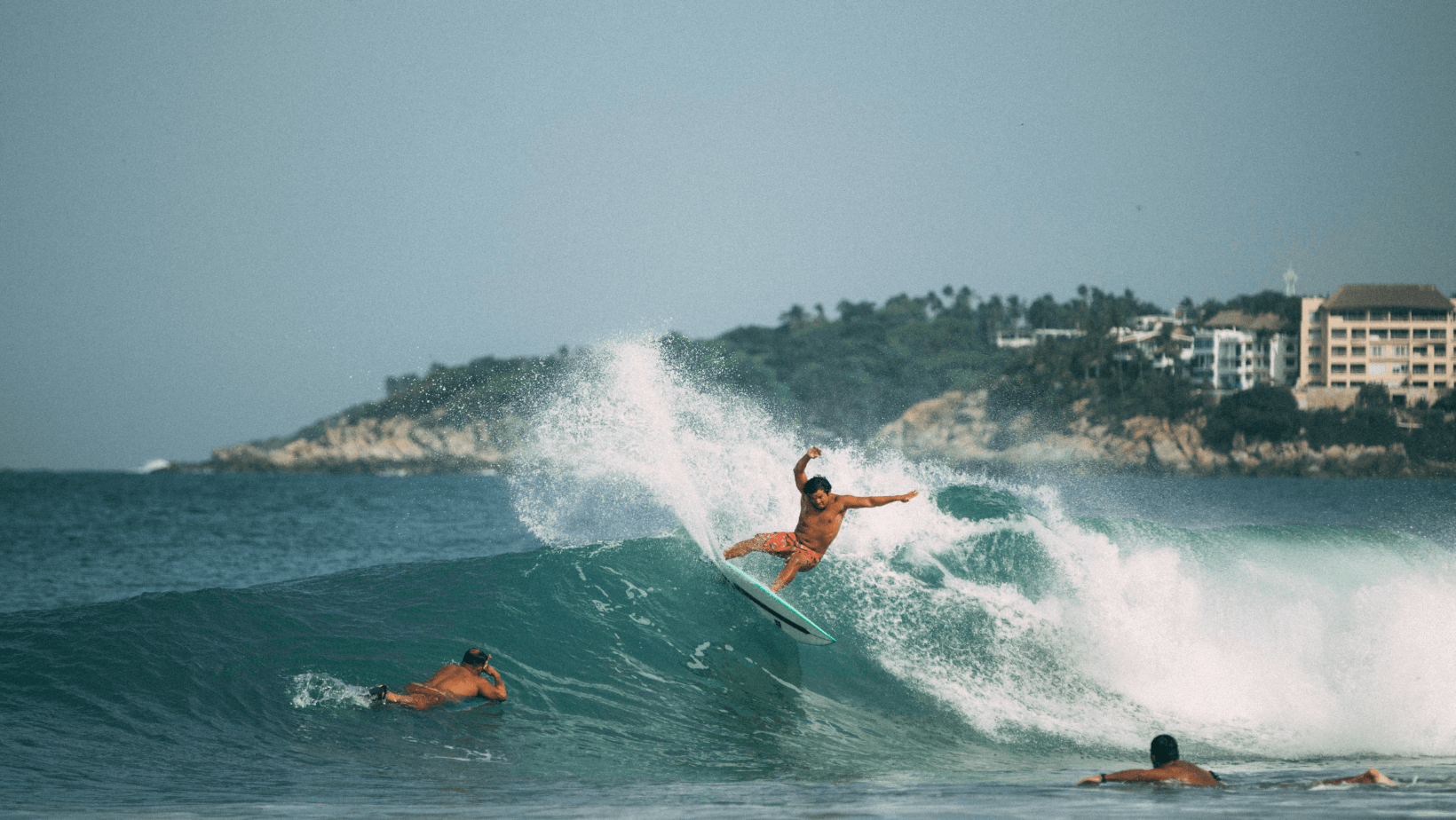
Surfing isn’t just a sport anymore. It’s a global identity that shapes how people travel, dress, and dream. What began as a pastime on the beaches of Hawaii and California now powers a multi-billion-dollar industry that spans continents, from tropical surf camps to inland wave pools.
According to Grand View Research, surf tourism was worth around 68 billion US dollars in 2024 and is expected to grow by nearly 17 percent a year until 2030. That number includes camps, schools, retreats, resorts, and guided trips, but not equipment or apparel. Add those, and surfing’s economic footprint is enormous.
For surf businesses, whether you run a surf camp, school, or a wave pool, understanding how surf culture became a global brand isn’t just interesting background. It’s a blueprint for growth.
Long before investors noticed, surf culture had already taken root. In the 1950s and 60s, films like The Endless Summer and Gidget romanticised surfing as freedom, youth, and connection to nature. These stories travelled far beyond the beach. People who had never stood on a board started dressing like surfers, speaking like surfers, and dreaming of a coastal life.
Surfing became more than sport. It became a symbol of escape.
Today, that identity is still what draws guests to surf businesses. When someone books a week at a camp or buys a lesson they’re buying access to a lifestyle they’ve seen in films, magazines, and, now, Instagram reels.
In the 1970s and 80s, Quiksilver, Billabong, and Rip Curl helped shape surf culture into something you could wear, clothing that carried the feeling of belonging.
These companies showed that surf culture could sell. And they laid the foundation for what today’s surf camps, schools, and wave pools do so well: turning lifestyle into a business model.

Surf culture created the dream. Tourism gave it a business plan.
The global surf tourism market reached 68 billion US dollars in 2024 and is expanding faster than almost any other travel niche. That growth isn’t limited to ocean destinations, inland experiences are now part of the same story.
Surf camps like Lapoint and Dreamsea have perfected the art of packaging waves with accommodation, yoga, dining, and nightlife. A week there is about more than just learning to surf; it’s about living the life.
Surf schools in Portugal, Costa Rica, and Bali double as cultural gateways. Students arrive for lessons and leave feeling like they’ve joined a tribe, complete with shared breakfasts, film nights, and post-surf beers.
Wave pools are the latest piece of the puzzle. Alaïa Bay in Switzerland draws travellers to the Alps for perfect waves. The Wave in Bristol brings surfing to the English countryside, while URBNSURF in Melbourne turns city dwellers into regular surfers without the coastal drive.
What makes this segment so strong is that it sits at the crossroads of adventure, wellness, and lifestyle travel, three of the fastest-growing areas in tourism today.

Surfing speaks a language that everyone seems to understand. The shaka, the board-on-roof silhouette, the word stoked, they’re recognised in every corner of the world.
This shared vocabulary makes surf travel scalable. A guest from Germany or Japan can land at a camp in Portugal and immediately fit in. They know the rituals, the slang, the rhythm of life around the tides.
That global familiarity is also why wave pools have taken off so quickly. When Alaïa Bay opened, it didn’t need to explain what surfing was. The culture had already done the work. The pool simply gave people access.
The biggest lesson surf businesses can take from this cultural growth is simple: people buy experiences, not transactions.
Surf camps are not just accommodation providers with boards on the side. They’re immersive cultural hubs. Lapoint’s shared dinners, workshops, and parties are as central to the experience as time in the water.
Surf schools thrive when they build small rituals, a group stretch before paddling out, a coffee debrief after. Those moments create connection and keep guests coming back.
Wave pools are moving the same way. Alaïa Bay hosts contests, music events, and open days that transform the facility into a community space. Regulars recognise each other in the lineup, stay for food afterwards, and keep returning because it feels like home.
The result? Higher loyalty, repeat bookings, and stronger word of mouth. People don’t return only for waves; they return for belonging.
The rise of surf culture as a global brand offers clear lessons for anyone in the industry:
Identity drives demand.
Guests book lessons and camps because they want to feel like surfers, not tourists. The more your brand helps them live that identity, the more they’ll connect with you.
Storytelling fuels growth.
Surf culture has always spread through stories: The Endless Summer, magazine spreads, YouTube edits. Your marketing should do the same. Show the moments that make your brand human.
Community builds loyalty.
Surfing is social. Businesses that create shared experiences, from barbecues to festivals, turn first-timers into long-term advocates.
The businesses that will thrive aren’t just the ones with the best facilities or the sharpest deals. They’ll be the ones that keep doing what surf culture has always done best: Turning waves into stories, and stories into community